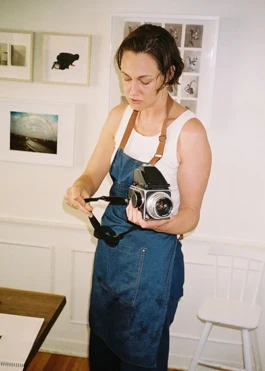
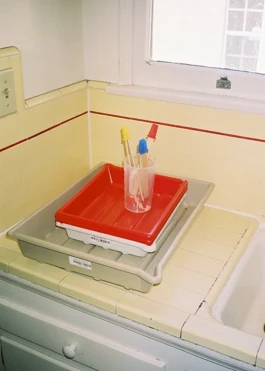
Natural Beauty
Jenny hails from Ontario originally, but since leaving has been on a similar geographical journey as myself – from London to Los Angeles via New York, where we first met. Jenny quietly goes about her craft-making in photography seemingly undeterred by whatever expectations the industry might have. Her beautiful self-initiated portraiture and landscape projects are now perfectly complimented by her botanical series, which is created at home using a process originally conceived in the 1800’s. The prints are nothing short of stunning.

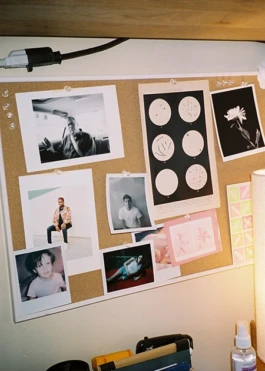
Tell me about growing up Ontario, Canada? What were you into at the time?
I moved around a bit as a kid, but spent my high school years in Stratford, Ontario which is also where I spent most of my summers at my grandparent’s farm. I had the classic teenage desire to get out of the small town. My friend Wendy and I spent endless hours in 9th grade plotting our exit. Actually, looking back it was a pretty cool town to be in during high school. Other than its most famous export, Justin Bieber, it also has a pretty amazing Shakespearean theater, so I was really exposed to a lot of theater and the arts community that came along with it. My friends and I spent a disproportionate amount of time, day and night, drinking bottomless black coffee at a local bar/restaurant. I was always kinda into fashion, or the 90’s Southwestern Ontario interpretation of it. I loved digging around at vintage shops. My favorite outfit in 9th and 10th grade was my grandpa’s overalls and a cardigan. 90s.. I still have the cardigan. I was into a kinda weird mix of music. I loved Tori Amos, Bjork, The Cranberries and think I listened to Leonard Cohen and Joni Mitchell on repeat for about 2 years solid.
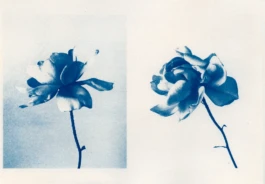
“I remember feeling like anything was possible and how excited I was that you could take the subway to the beach for $2.”
When did you first discover photography and decide that was going to be a career path for you?
One of my favorite things to do when I was a kid was to go through all of my Nana’s old photos. She had amazing albums from the 30’s onwards. That was maybe my fist deep connection to the imagery. I think the first magazine that got me really excited was Colors. I remember getting my first copy and bringing it on a school trip to Quebec City. It was taken away by my teacher who thought it was inappropriate which is so silly, but also gave it more allure. In high school, I had a really great art teacher who helped me re-open the school darkroom that had been shut since the 80’s. I was pretty much hooked from the point and knew it was the direction I wanted to go. I started college for photography, but ended up leaving in the first few weeks as I had a chance to work in Europe which I hopped on.
Tell me about some of your best personal projects to date?
I was fortunate enough to get to spend some time in Nunavut, the largest and the northernmost territory in Canada. I traveled with a group of kids from the high school in my hometown. I was a chaperone and we stayed at in the high school in Kinngait, Nunavut. I was mostly taking portraits of the teenagers that went to the high school. I love the photos I took on these trips, but that isn’t actually what means the most to me from this. It was a truly changing experience for me. I met so many amazing people and Nunavut is one of the most beautiful places I have every been, I feel like I learned so much from these trips. Not only about Inuit culture, but also about what stories are mine to tell and what stories aren’t. Canada has a very dark history and I think this was only coming into focus for me around the time of my first trip. Canadians have a lot unlearning to do with the whitewashed history we are taught, which ignores the genocide that the Canadian government and church committed, and the theft of land and culture that Canada is built on. This is the history that needs to be taught in schools and that adult Canadians should be educating themselves on. These trips opened my eyes to this and I feel like they were the beginning of my journey of relearning.
I think my other favorite personal project is an ongoing one I am working on called Stonetown Diary. It is based on where I grew up and the rural community surrounding my grandparent’s farm. Right now it is just an ongoing diary of images that I have shot the past several years on trips home. Every time I am back, I look at things a little differently or discover a new part of the narrative.
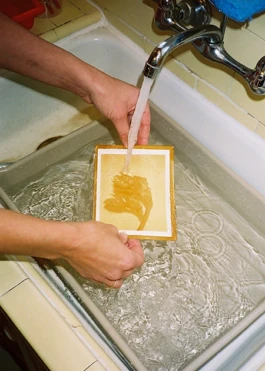
“I think that having more physical space in LA allowed for me to have more mental to breath and slowly figure out where I was heading.”
You now reside in Los Feliz, LA. So how was the transition from NY? Did it affect your work in any way?
I have been in LA for about 8 years now. When we first moved here we had a sublet for a few months in Silverlake in a little house that was only accessible by a long set of stairs up from the street. There was a beautiful view, bougainvillea, huge palm trees and hummingbirds. It was pretty magical and really drew me into the LA life. Before moving here I had only been to LA a few times and I really didn’t realize how much nature is intertwined with life in LA. We moved to Los Feliz from there and have been here for most of the last 8 years. I love Los Feliz. It felt like a great transition neighborhood from NY as it is a really walkable area, but it also has Griffith Park, big trees, an interesting history and occasionally some good people watching. I definitely think that whatever environment you live in ends up affecting your work. I think that having more physical space in LA allowed for me to have more mental space to breath and slowly figure out where I was heading. On the physical, environmental side of things LA is such a cinematic city with its famous beautiful light. It was all really new to me which is always inspiring.
Can you talk a little about processing the images at home, I know you’re using some age-old techniques?
I started messing around with anthotypes which is a process where you print with plant pigments which are photosensitive. It is a really slow process with exposure times that can be days to months long. I am pretty impatient, so solely working on this was a bit too slow for me. I moved on to using kallitypes and gum bichromate printing. Kallitypes are done with silver nitrate and ferric oxalate that you use to coat paper and then you can expose in the sun. Gum bichromate are done with gum Arabic, potassium dichromate and watercolor paints. Recently I’ve been mixing the two processes with gum print overlays on kallitype prints. It’s a really fun process.
The output is incredibly beautiful and has such a wonderful tactile nature, so makes sense to turn this project into a book at some point right?
This is definitely something I am working towards as I get deeper into looking at the meaning and symbolism of flowers and what the images represent to me.
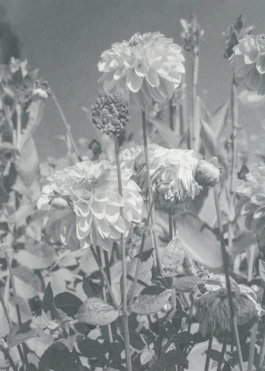
So, tell me how your latest botanical project came about?
I spent part of the pandemic in Florida and while I was there I started doing the Instagram account for a botanical garden that has an incredible palm tree collection. It has been so wonderful to spend so much time with plants. It was definitely a blessing during the pandemic to have a creative outlet that focuses on nature. Since working on this I have spent time researching and learning about the different species, symbolism of flowers and plants as well as a bit of the history of Botanical nomenclature which is the scientific naming of plants. This has evolved into a broader project looking at plants and flowers not just from the gardens.
Pre-pandemic I had started spending a lot of time in a dark room again. I really love the tactile process of printing. Obviously the darkroom I was using shut down during the pandemic, which lead me to research what type of printing I could do at home. The two things ended up merging together.
Can you tell me a little about gum prints and how I can test a few portraits using this technique?
Gum Bichromate prints were actually the first type of color print, invented in 1858. Prints can be made into a full color image by printing multiple exposures on top of each other using individual layers of cyan, yellow and magenta pigment on top of each other. It’s pretty cool. You can also do single color prints which I love doing. It allows you to print in any color that you would like, as the pigment is watercolor mixed with gum Arabic and potassium dichromate.
The first thing you need is a negative that is the size you want your final image to be as you printing it direct on the paper not with an enlarger. You need a good 100% cotton paper, gum Arabic and potassium dichromate, and watercolor paint. The chemicals are really toxic, so goggles and gloves are also key. You basically mix up the pigment, coat the paper and then expose the negative in the sun. It’s a bit fiddly to get the ratios right, but experimenting is half the fun. You can also print over cyanotypes, kallitypes or other alternative process prints.
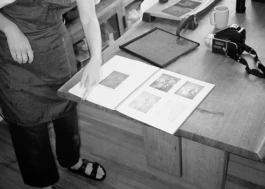
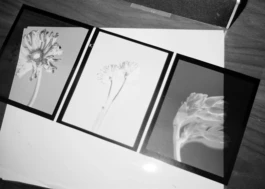
Any exciting projects on the horizon? Personal or commissioned?
I am heading home to Canada for the summer, which I am really excited about. As I mentioned before, I have been working on an ongoing project based around where my grandparent’s farm was. The past year and a half been pretty strange and not being able to go home has really brought a lot into focus for me. I’m looking forward to diving back into this project when I get there, mixing in some of the techniques I have been working on the past year and a half. Distance and time definitely create new perspectives.
What are you listening to whilst working?
I listen to KUSC and NPR a lot. I have also had Joni Mitchell back in heavy rotation this past year. I think Blue has been my number one pandemic album. It transports me to another time and place in my head. Right now I am listening to The Cranberries No Need to Argue – mostly inspired by answering the first question.
Favorite eatery in Los Feliz?
I think probably Little Dom’s. It’s the perfect walking distance from my house. It’s great for coffee, breakfast, lunch, dinner.. And people watching. There are lots of great places in the area, but this is my definite go-to.
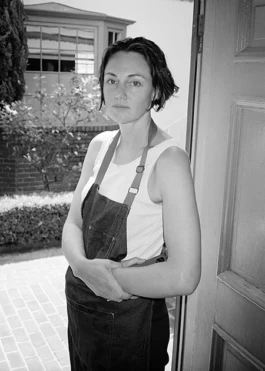

Natural Beauty

Jenny hails from Ontario originally, but since leaving has been on a similar geographical journey as myself – from London to Los Angeles via New York, where we first met. Jenny quietly goes about her craft-making in photography seemingly undeterred by whatever expectations the industry might have. Her beautiful self-initiated portraiture and landscape projects are now perfectly complimented by her botanical series, which is created at home using a process originally conceived in the 1800’s. The prints are nothing short of stunning.


Tell me about growing up Ontario, Canada? What were you into at the time?
I moved around a bit as a kid, but spent my high school years in Stratford, Ontario which is also where I spent most of my summers at my grandparent’s farm. I had the classic teenage desire to get out of the small town. My friend Wendy and I spent endless hours in 9th grade plotting our exit. Actually, looking back it was a pretty cool town to be in during high school. Other than its most famous export, Justin Bieber, it also has a pretty amazing Shakespearean theater, so I was really exposed to a lot of theater and the arts community that came along with it. My friends and I spent a disproportionate amount of time, day and night, drinking bottomless black coffee at a local bar/restaurant. I was always kinda into fashion, or the 90’s Southwestern Ontario interpretation of it. I loved digging around at vintage shops. My favorite outfit in 9th and 10th grade was my grandpa’s overalls and a cardigan. 90s.. I still have the cardigan. I was into a kinda weird mix of music. I loved Tori Amos, Bjork, The Cranberries and think I listened to Leonard Cohen and Joni Mitchell on repeat for about 2 years solid.

“I remember feeling like anything was possible and how excited I was that you could take the subway to the beach for $2.”
When did you first discover photography and decide that was going to be a career path for you?
One of my favorite things to do when I was a kid was to go through all of my Nana’s old photos. She had amazing albums from the 30’s onwards. That was maybe my fist deep connection to the imagery. I think the first magazine that got me really excited was Colors. I remember getting my first copy and bringing it on a school trip to Quebec City. It was taken away by my teacher who thought it was inappropriate which is so silly, but also gave it more allure. In high school, I had a really great art teacher who helped me re-open the school darkroom that had been shut since the 80’s. I was pretty much hooked from the point and knew it was the direction I wanted to go. I started college for photography, but ended up leaving in the first few weeks as I had a chance to work in Europe which I hopped on.
Tell me about some of your best personal projects to date?
I was fortunate enough to get to spend some time in Nunavut, the largest and the northernmost territory in Canada. I traveled with a group of kids from the high school in my hometown. I was a chaperone and we stayed at in the high school in Kinngait, Nunavut. I was mostly taking portraits of the teenagers that went to the high school. I love the photos I took on these trips, but that isn’t actually what means the most to me from this. It was a truly changing experience for me. I met so many amazing people and Nunavut is one of the most beautiful places I have every been, I feel like I learned so much from these trips. Not only about Inuit culture, but also about what stories are mine to tell and what stories aren’t. Canada has a very dark history and I think this was only coming into focus for me around the time of my first trip. Canadians have a lot unlearning to do with the whitewashed history we are taught, which ignores the genocide that the Canadian government and church committed, and the theft of land and culture that Canada is built on. This is the history that needs to be taught in schools and that adult Canadians should be educating themselves on. These trips opened my eyes to this and I feel like they were the beginning of my journey of relearning.
I think my other favorite personal project is an ongoing one I am working on called Stonetown Diary. It is based on where I grew up and the rural community surrounding my grandparent’s farm. Right now it is just an ongoing diary of images that I have shot the past several years on trips home. Every time I am back, I look at things a little differently or discover a new part of the narrative.

“I think that having more physical space in LA allowed for me to have more mental to breath and slowly figure out where I was heading.”
You now reside in Los Feliz, LA. So how was the transition from NY? Did it affect your work in any way?
I have been in LA for about 8 years now. When we first moved here we had a sublet for a few months in Silverlake in a little house that was only accessible by a long set of stairs up from the street. There was a beautiful view, bougainvillea, huge palm trees and hummingbirds. It was pretty magical and really drew me into the LA life. Before moving here I had only been to LA a few times and I really didn’t realize how much nature is intertwined with life in LA. We moved to Los Feliz from there and have been here for most of the last 8 years. I love Los Feliz. It felt like a great transition neighborhood from NY as it is a really walkable area, but it also has Griffith Park, big trees, an interesting history and occasionally some good people watching. I definitely think that whatever environment you live in ends up affecting your work. I think that having more physical space in LA allowed for me to have more mental space to breath and slowly figure out where I was heading. On the physical, environmental side of things LA is such a cinematic city with its famous beautiful light. It was all really new to me which is always inspiring.
Can you talk a little about processing the images at home, I know you’re using some age-old techniques?
I started messing around with anthotypes which is a process where you print with plant pigments which are photosensitive. It is a really slow process with exposure times that can be days to months long. I am pretty impatient, so solely working on this was a bit too slow for me. I moved on to using kallitypes and gum bichromate printing. Kallitypes are done with silver nitrate and ferric oxalate that you use to coat paper and then you can expose in the sun. Gum bichromate are done with gum Arabic, potassium dichromate and watercolor paints. Recently I’ve been mixing the two processes with gum print overlays on kallitype prints. It’s a really fun process.
The output is incredibly beautiful and has such a wonderful tactile nature, so makes sense to turn this project into a book at some point right?
This is definitely something I am working towards as I get deeper into looking at the meaning and symbolism of flowers and what the images represent to me.

So, tell me how your latest botanical project came about?
I spent part of the pandemic in Florida and while I was there I started doing the Instagram account for a botanical garden that has an incredible palm tree collection. It has been so wonderful to spend so much time with plants. It was definitely a blessing during the pandemic to have a creative outlet that focuses on nature. Since working on this I have spent time researching and learning about the different species, symbolism of flowers and plants as well as a bit of the history of Botanical nomenclature which is the scientific naming of plants. This has evolved into a broader project looking at plants and flowers not just from the gardens.
Pre-pandemic I had started spending a lot of time in a dark room again. I really love the tactile process of printing. Obviously the darkroom I was using shut down during the pandemic, which lead me to research what type of printing I could do at home. The two things ended up merging together.
Can you tell me a little about gum prints and how I can test a few portraits using this technique?
Gum Bichromate prints were actually the first type of color print, invented in 1858. Prints can be made into a full color image by printing multiple exposures on top of each other using individual layers of cyan, yellow and magenta pigment on top of each other. It’s pretty cool. You can also do single color prints which I love doing. It allows you to print in any color that you would like, as the pigment is watercolor mixed with gum Arabic and potassium dichromate.
The first thing you need is a negative that is the size you want your final image to be as you printing it direct on the paper not with an enlarger. You need a good 100% cotton paper, gum Arabic and potassium dichromate, and watercolor paint. The chemicals are really toxic, so goggles and gloves are also key. You basically mix up the pigment, coat the paper and then expose the negative in the sun. It’s a bit fiddly to get the ratios right, but experimenting is half the fun. You can also print over cyanotypes, kallitypes or other alternative process prints.


Any exciting projects on the horizon? Personal or commissioned?
I am heading home to Canada for the summer, which I am really excited about. As I mentioned before, I have been working on an ongoing project based around where my grandparent’s farm was. The past year and a half been pretty strange and not being able to go home has really brought a lot into focus for me. I’m looking forward to diving back into this project when I get there, mixing in some of the techniques I have been working on the past year and a half. Distance and time definitely create new perspectives.
What are you listening to whilst working?
I listen to KUSC and NPR a lot. I have also had Joni Mitchell back in heavy rotation this past year. I think Blue has been my number one pandemic album. It transports me to another time and place in my head. Right now I am listening to The Cranberries No Need to Argue – mostly inspired by answering the first question.
Favorite eatery in Los Feliz?
I think probably Little Dom’s. It’s the perfect walking distance from my house. It’s great for coffee, breakfast, lunch, dinner.. And people watching. There are lots of great places in the area, but this is my definite go-to.
